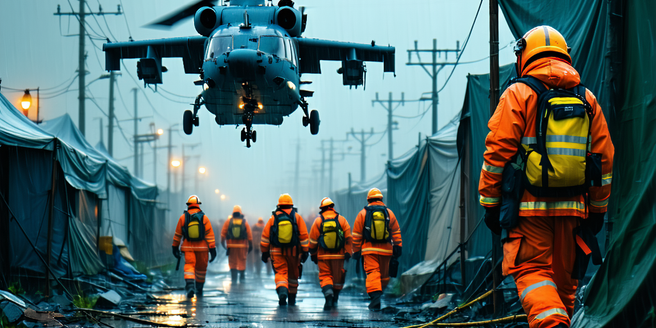
Understanding the Impact of Severe Storms on Communities
Severe storms pose significant threats to communities across the globe, affecting infrastructure, disrupting livelihoods, and endangering lives. These natural disasters result in economic losses, damage to homes and public amenities, and compromised critical services. Communities face challenges in accessing emergency assistance, healthcare, and shelter, which compels a deeper understanding of these impacts to enhance resilience. By analyzing past storm events, identifying vulnerable areas, and understanding social dynamics, communities can better prepare and respond to future storms. Effective communication and swift action are key in minimizing damage and fostering recovery efforts. Encouraging public awareness and education about storm risks further ensures that individuals take necessary precautions, thereby reducing the community’s vulnerability during a storm.
The Role of Emergency Preparedness in Enhancing Resilience
Emergency preparedness is pivotal in mitigating the impacts of severe storms and enhancing community resilience. Developing robust emergency plans ensures swift and effective response when storms strike. Communities should establish clear communication channels, designated shelters, and resource allocation strategies to manage emergencies efficiently. Regular drills and simulations help individuals understand their roles during a storm, boosting collective preparedness. Community leaders can also utilize social media platforms to disseminate vital information quickly. Collaboration with local authorities and emergency services strengthens the response framework. Moreover, investing in infrastructure that withstands severe weather events increases safety and continuity of services. Building informed communities that prioritize readiness over reactive measures leads to quicker recovery and reduces the storms’ long-term impact, ultimately fostering a culture of resilience.
Community-Led Initiatives in Storm Recovery
Community-led initiatives play a vital role in storm recovery, harnessing local knowledge and resources to rebuild more resilient communities. Grassroots efforts often include neighborhood cleanups, distribution of supplies, and support networks for affected individuals. Such initiatives also create opportunities for skill-sharing among residents, enhancing local resilience. Local organizations also collaborate with government agencies and non-profits to facilitate efficient recovery. These initiatives tap into the community’s social capital, fostering unity and shared responsibility. Moreover, involving community members in decision-making processes ensures that recovery solutions address specific needs and vulnerabilities unique to the area. By empowering residents to take an active role in recovery, communities not only rebuild infrastructure but also strengthen social bonds necessary for future resilience.
Leveraging Technology to Improve Storm Response and Recovery
Technology plays an increasingly critical role in enhancing storm response and recovery efforts. Advanced weather forecasting tools provide early warnings, allowing communities to prepare for impending storms more effectively. The development of artificial intelligence in predictive modeling further improves the accuracy of these forecasts. Drones and satellite imagery aid in assessing damage and coordinating relief operations, ensuring resources reach those in need swiftly. Mobile applications enable real-time communication and information dissemination, keeping residents informed about safety protocols and resource availability. Meanwhile, social media platforms facilitate community engagement and support networks. By integrating these technological advancements into emergency management strategies, communities can respond with agility and precision, reducing the duration and impact of disruptions.
Building Long-term Resilience through Policy and Education
Building long-term resilience to severe storms requires integrative policies and comprehensive education initiatives. Governments must prioritize policies that mandate resilient infrastructure, risk assessments, and sustainable land use planning. Public-private partnerships can also play a significant role in bolstering storm preparedness efforts. By investing in modern technologies, communities can better predict and respond to severe weather events. Regulations ensuring proper building codes and zoning laws help protect vulnerable areas. At the same time, public education campaigns focusing on storm preparedness and climate literacy empower individuals to make informed decisions. Schools and community centers should incorporate resilience education into their programs, fostering a proactive culture in future generations. Collaborative policy-making with community stakeholders ensures diverse perspectives are included, resulting in comprehensive strategies that fortify community resilience over time.
